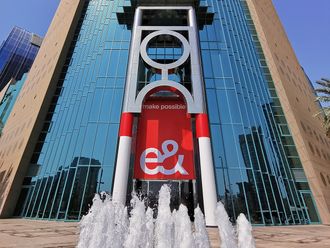Karachi: The Pakistani central bank’s support for the rupee has left the currency little changed in the past two years. As the economy faces signs of stress ahead of elections in 2018 the question becomes how much longer can it last?
Banks refrain from trading above 104.87 rupees a dollar, according to people with knowledge of the matter. The central bank will assist and ensure availability of foreign exchange to keep the currency steady, the people said, asking not to be identified so they won’t be reprimanded by the central bank. Anyone attempting to make a trade above that level will receive a call within minutes from the regulator, two of the people said.
The State Bank of Pakistan and government officials say that the rupee is a free-floating currency that moves under normal supply and demand pressures. Yet it’s the only measure to have gained against the dollar in Asia since 2014, up 0.5 per cent in that period, according to a basket of 13 currencies compiled by Bloomberg.
That’s despite signs that south Asia’s second-largest economy is starting to look vulnerable with its current account deficit tripling to $7.3 billion (Dh26.81 billion) in the ten months through April, while exports have fallen to the lowest in six years. Pakistan’s foreign exchange reserves have also declined 15 per cent to $15.9 billion in May, after peaking at $18.9 billion in October last year.
“Its artificial, I don’t think there is any stability, there is an enforced stability,” said Muzaffar Ali Isani, an economics professor at Iqra University in Karachi. “You have to keep in mind there is an election next year. At least to the run up of the election” they will try and keep it unchanged, he said.
Pakistan emerged from the edge of a debt crisis in 2013, staved off when the then newly-elected government of Prime Minister Nawaz Sharif submitted to the $6.6 billion International Monetary Fund loan programme, which ended in September. The IMF said last year that Pakistan’s currency is overvalued as much as 20 per cent.
“The forex market is independent,” Finance Minister Ishaq Dar said in a February interview. “I think it is the confidence of the investors, confidence of the market players and it is the true strength of the currency itself.”
Pakistan’s Ministry of Finance didn’t immediately respond to an email seeking comment. The rupee was little changed at 104.8 per dollar on the interbank market at 10.14am on Tuesday in Karachi.
Central bank independence
Pakistan’s central bank has faced continued questions over its independence despite the introduction of South Asia’s first monetary policy committee by Ashraf Wathra whose three-year tenure ended last month. Riaz Riazuddin has been made acting governor until a replacement is named within three months.
“Like many other central banks, State Bank of Pakistan occasionally intervenes in the market with the objective to contain the excessive volatility in the exchange rate and ensure smooth functioning of the domestic foreign exchange market,” the central bank said in an emailed response to queries. It didn’t give further details.
Pride is at stake as Pakistan boasts of increased infrastructure investment as China finances more than $55 billion in projects across the country, part of its flagship ‘One Belt, One Road’ plan. Concerns have increasingly been raised that Pakistan will be left with unmanageable foreign-currency debts to the Chinese, which any rupee depreciation would exacerbate.
“Keeping your rupee strong means a stronger economy, this has gone into mindset of this government,” said Ashfaque Hasan Khan, a former finance ministry adviser and now dean at the business school at Islamabad’s National University of Sciences and Technology. “How can you align this type of exchange rate with an unprecedented rise in trade gap? It’s against economics.”
Pakistan’s trade gap expanded to $3.2 billion in April, close to lowest level hit a month ago since Bloomberg started compiling data in 2003.
The nation’s stock market is also feeling the pinch. Foreigners have sold stocks worth $232 million this year despite MSCI Inc upgrading the nation to emerging markets status this month.
Concerns about the overvalued rupee coming under pressure is one reason some foreign investors are fleeing and staying away, said Saad Khan, the deputy head of research at IGI Finex Securities Ltd. in Karachi.
“A period of currency stability is great for foreign investors if a country is emerging from a crisis and that describes Pakistan in 2013 to 2015,” said Hasnain Malik, the Dubai-based head of global equities research at Exotix Partners LLP. “But if it goes on too long then competitiveness is eroded and sooner or later has to be corrected. That arguably describes where we are now.”
The currency would probably depreciate about 8 per cent next year if the interventions were halted, according to Saad bin Ahmed, director of capital markets at Karachi-based Multiline Securities Pvt. A devaluation may happen next year after the vote, going by recent history, he said.
“Macro economic imbalances are slowly building, foreign exchange reserves will deplete going forward with payments for energy projects and IMF repayments starting next year,” Ahmed said. “The currency will stay under pressure and the pressure is piling up.”












